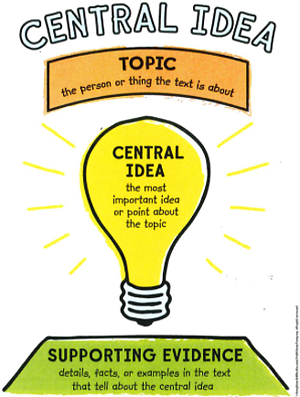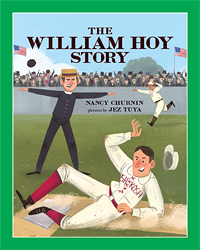Reading: Central Idea
Reading: Central Idea

Last week we learned that the topic of a text is the person or thing that the text is about. A biography tells about the life of a real person. The topic of a biography is always the person the text is about.
The central idea of a biography is the most important idea or point the author wants readers to take away after reading about a person’s life. Good readers figure out the central idea of a text by paying attention to supporting evidence. Authors include small pieces of information, or details, to tell more about the central idea.
A detail might be information about a person’s family. Authors may include facts or examples about a person.

Read Aloud: Student Instructions
To practice finding the central idea, read The William Hoy Story (online textbook: Classroom Library).
Before you begin, PREVIEW the text and PREDICT what the text will be about. You may write your prediction down (optional). As you read the story, you can then confirm or reject your prediction.
Read Aloud Steps
- Step 1: Read each question aloud. Pause after each of the page numbers to think about your answer.
- Step 2: Answer the questions aloud with someone. You do not need to write or turn in the answers for this section.
Parent/Guardian: Check the student's responses with the answer key
, Reading: Central Idea (1.2.1).
- p. 6: How do William and his family talk with each other?
- p. 15: How does William feel about the “hearing world”? How do you think this makes him feel? Use evidence from the text to support your answer.
- p. 21: What do you think the umpire will do next?
- p. 29: How does William Hoy change the game of baseball?
Once you have completed reading the story, answer the following questions aloud to someone.
- Who is this text about (main topic)?
- What important details do you learn about William Hoy?
- What is William Hoy’s problem?
- What details tell how he solved his problem?
- What is the most important idea the author wants you to know after reading this text? Use the details you learned about William Hoy to explain the central idea.
Texas Tech K-12
-
Address
Texas Tech Plaza | 1901 University Ave, Lubbock, TX 79401 -
Phone
(800) 692-6877 -
Email
ttuk12@ttu.edu

